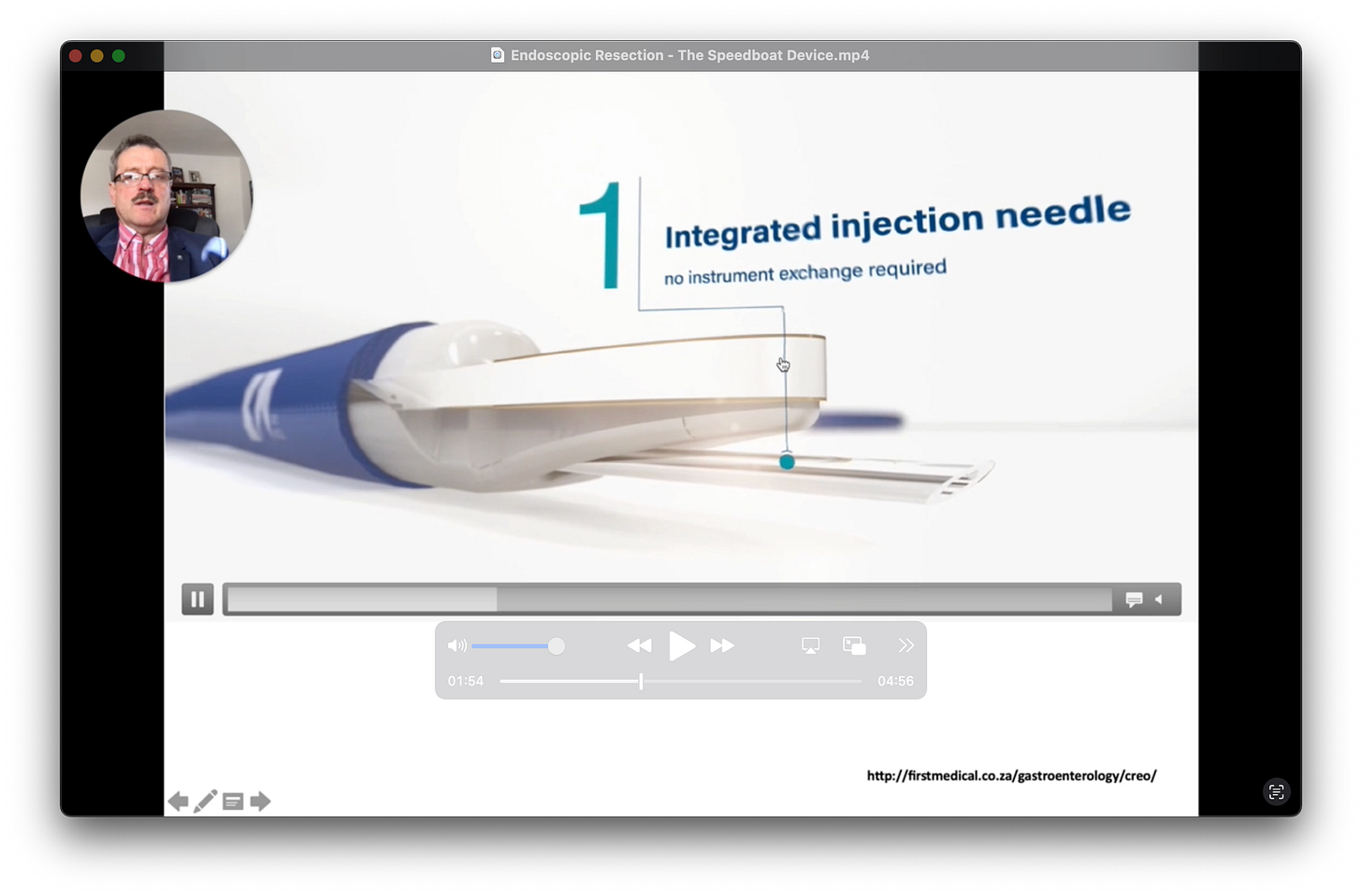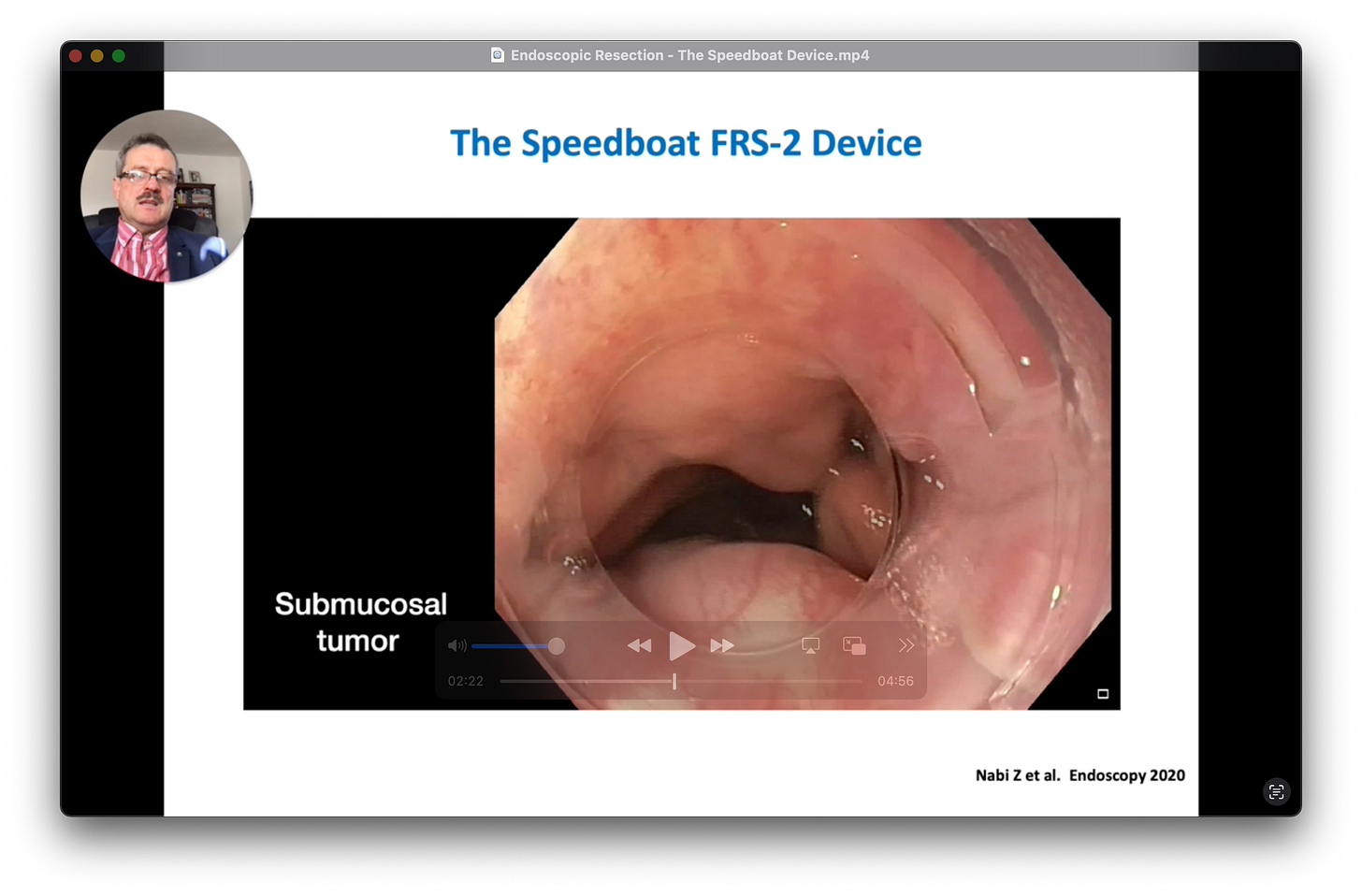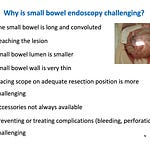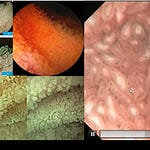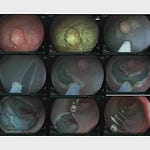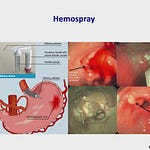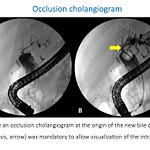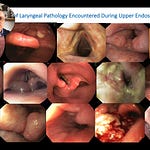Picture this: You're performing an endoscopic mucosal resection at the gastroesophageal junction, and instead of switching between multiple devices for injection, cutting, and hemostasis, you complete the entire procedure with one innovative tool. The speedboat device represents a significant advancement in endoscopic resection technology, offering integrated capabilities that streamline the most common intervention we perform as endoscopists [0:32].
Today's discussion focuses on this novel resection technology and its practical applications.
Why Endoscopic Resection Matters More Than Ever
Endoscopic resection stands as the most important endoscopic intervention we perform [0:11]. While other procedures like hemostasis and foreign body removal remain crucial [0:19], resection represents our most frequent therapeutic challenge [0:32]. The imperative is clear: we need to do our best to do the best resection [0:39].
The historical context adds perspective to this innovation. Professor Daly first described endoscopic mucosal resection in 1973 [0:46], yet it took many years for widespread adoption [0:54]. Now, the speedboat device represents the next evolution in this essential technique.
Device Design: Engineering Meets Clinical Need
The Speedboat Concept
The device earns its name from its distinctive appearance—it looks like a speedboat on the tip [1:05]. This isn't merely aesthetic; the design integrates multiple therapeutic modalities into a single instrument [1:12].
The device showcases its bipolar areas and retractable needle mechanism
Key Components
1. Integrated Injection System The device includes a needle that comes with the device for submucosal injection [1:16]. This eliminates the need for separate injection needles [1:59].
2. Bipolar Cutting Electrodes The sides of the boat-like device have bipolar electrodes for cutting [1:21]. This bipolar configuration offers a significant advantage: the patient does not need to be hooked to do monopolar electrocautery [3:27].
3. Protective Design The lower part is a protective hole that protects the mucosa from damage [1:31]. Current flows only in the upper portions, enhancing safety [1:38].
4. Microwave Coagulation On the tip, there is microwave coagulation capability [1:42], providing immediate hemostatic control when needed [2:43].
5. Rotational Capability The entire device can be rotated [1:46], allowing rotation for exposure of the bipolar blades[2:49].
Clinical Application: Step-by-Step Technique
Case Example: GE Junction Tumor
The demonstration case involves a tumor at the gastroesophageal junction.
The Procedure Sequence:
Initial Injection [2:27]
Deploy the needle from the device [2:28]
Perform submucosal injection as with traditional techniques
Circumferential Incision [2:31]
Use the bipolar electrodes for cutting [2:31]
Create circumferential incision around the lesion [2:37]
Dissection Phase [2:39]
Proceed with slow dissection as we usually do with any other device [2:56]
Utilize right and left turns of the endoscope for optimal visualization [3:33]
Hemostasis Management
Address bleeding immediately with the microwave coagulator at the tip [2:43]
Perform electrocoagulation fiber by fiber as needed [3:47]
Additional Injection When Needed
Occasionally it is important to inject more [3:57]
Simply advance the needle and do some more injection [4:08]
Clinical Pearls and Practical Insights
Technique Advantages
Bipolar Efficiency: The bipolar current system eliminates grounding pad requirements, simplifying setup and enhancing patient safety [3:27].
Integrated Workflow: Having injection, cutting, and coagulation in one device increases the toolbox armamentarium[4:34].
Controlled Dissection: The ability to rotate and adjust electrode exposure allows for precise tissue handling [2:49].
Comparative Context
While the speedboat device offers novel features, it joins established tools in the endoscopic arsenal. As noted, favorite devices include the IT device, IT nano, and the tip of the snare [3:09], which have proven effective in numerous procedures [3:15].
Unlock advanced case examples, troubleshooting techniques, and a procedural guide for optimal speedboat device utilization.
Listen to this episode with a 7-day free trial
Subscribe to EndoCollab to listen to this post and get 7 days of free access to the full post archives.


